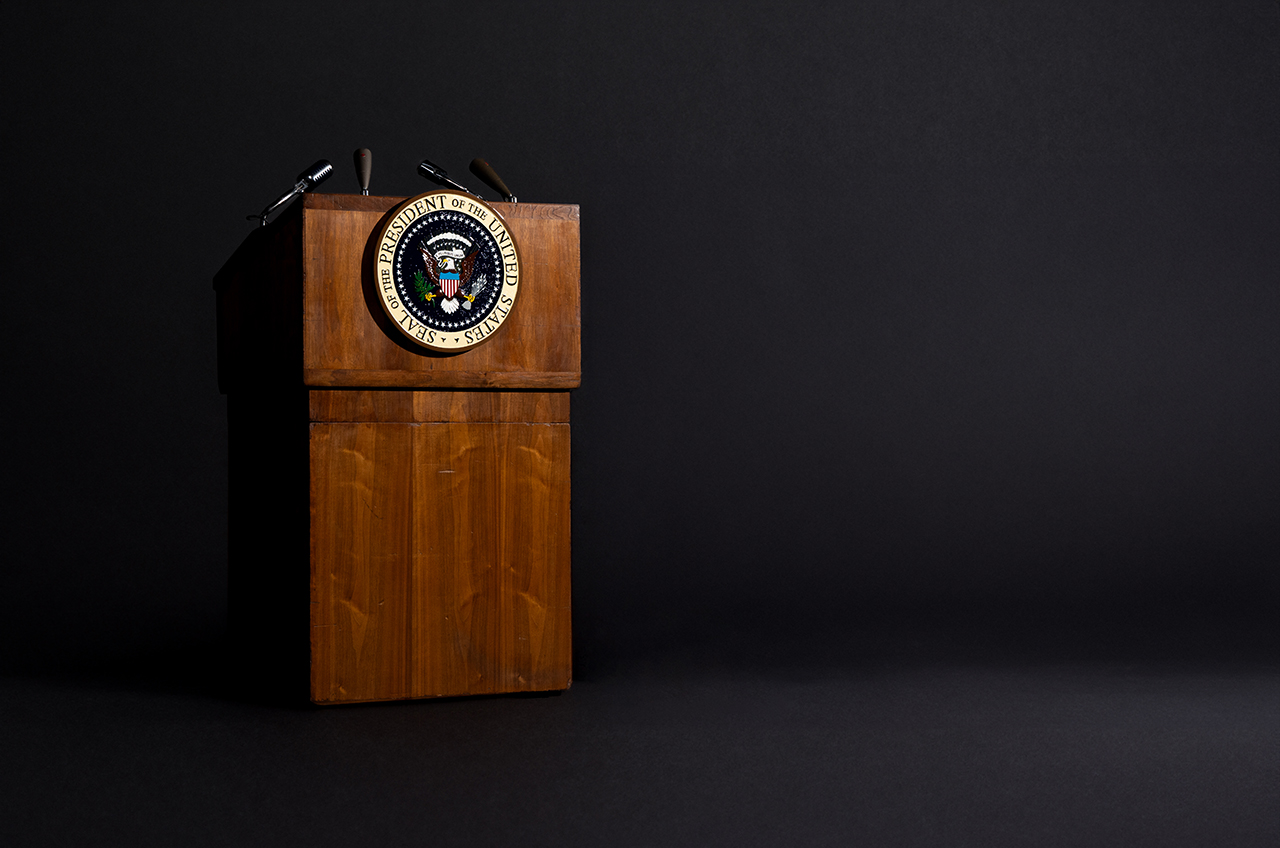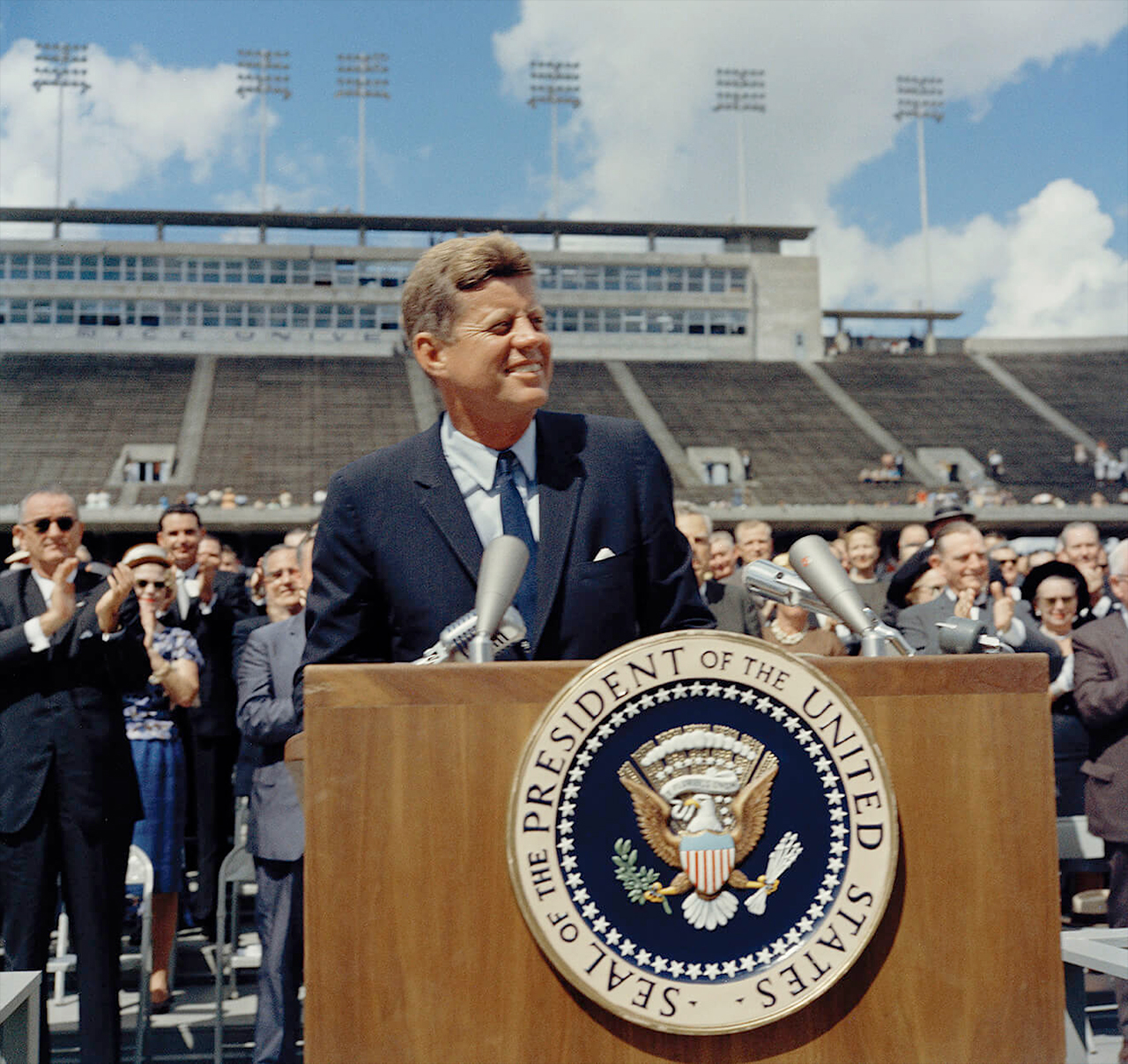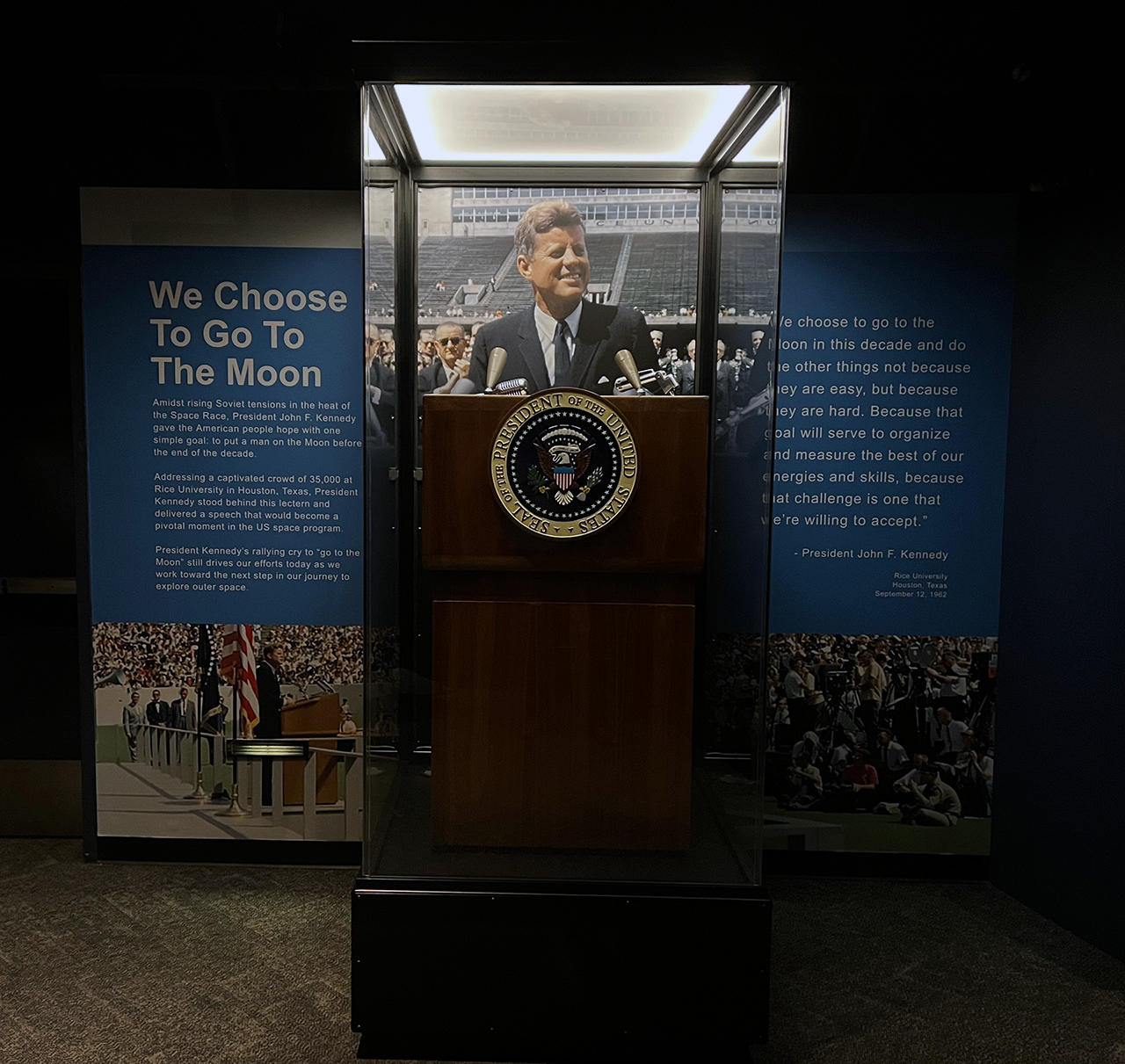Not a fake, JFK 'choose the moon' lectern restored to public display
The iconic stand has been restored to public display 61 years to the day after JFK gave his speech at Rice University.

As it turns out, the lectern from which President John F. Kennedy proclaimed "We choose to go to the moon" has been rightly on display for 30 years, contrary to a report that it was an "artifact fake."
Space Center Houston on Tuesday (Sept. 12) unveiled a new display case and exhibit for the now-authenticated wooden stand, highlighting its use by Kennedy at Rice University 61 years ago to the day. The lectern, which previously could be found at the front of the center's Destiny Theater, is now on exhibit just inside the entrance to Starship Gallery, opposite the display of Gordon Cooper's Mercury spacecraft.
"We are delighted to put to rest any doubts about the authenticity of this extraordinary lectern," said William Harris, president and chief executive of Space Center Houston, the official visitor center for NASA's Johnson Space Center and a Smithsonian affiliate. "This lectern represents a pivotal moment in history and serves as a powerful symbol of human achievement and aspiration. Its restoration and return to public display will allow us to continue educating and inspiring visitors for generations to come."
Related: Apollo 11: Why JFK believed his bold moonshot could actually happen
Earlier this year, a news story by WFAA, the ABC News affiliate in Dallas, called into question the pedigree of the lectern based on findings by Farris Rookstool III, a Dallas-based historian whose focus is on the Kennedy administration. Rookstool suggested it was more likely that the president used a stand that traveled with him from speech to speech and was designed to come apart to aid in its transport.
His key piece of evidence was a "saw cut" — a line where the top and bottom of the lectern separated — that was clearly visible in photographs taken in Rice Stadium on Sept. 12, 1962, but was seemingly absent from the stand on display at Space Center Houston.
"That was the most difficult thing to get over, is that we didn't have that saw cut," said Paul Spana, Space Center Houston's director of collections and curator, in an interview with collectSPACE.com.
Rookstool's convincing claims resulted in the lectern being taken off display. But that also gave Spana the chance to more closely inspect the suspect artifact.
"Sometime before the lectern was donated to Space Center Houston, people at Rice had refinished the lectern several times, and there were multiple layers of tinted varnish on it such that the wood grain was very difficult to see," said Spana. "But I found enough evidence that day to suggest that at least the top was actually the same one that was used at the Rice speech."
Related: What was the space race?
After discussing the matter with Harris, Spana sought out the help of Steve Pine, a furniture conservation expert from Pine Art Conservation. Pine received the lectern on April 17, for a comprehensive examination aimed at determining its history.
"Once we begun that conservation project, that's when we discovered the saw cut," Spana said. "The top of the lectern has a mechanism which allows it to raise and lower and part of that mechanism is missing so the top just drops down to its lowest position. And that's how we've always had it displayed."
"When it's at the lowest position, you can't see that separation line," he said.
Further, by removing several layers of varnish from the top and front of the lectern, Pine and Spana were able to conclusively match the exposed wood grain to what can be seen in archival photos. In fact, the two were not only able to match the stand to its use by Kennedy for his "Choose the Moon" lecture, but also talks delivered by President Dwight Eisenhower, then-Vice President (later President) Lyndon Johnson and former President Jimmy Carter when they each visited Rice.
But it was Kennedy's use of the lectern and the words that he delivered from it that make it an important piece of history, worthy of its conservation and preservation, said Spana.
"The way I look at it is, as, if you are President Kennedy, you have the Soviet Union passing you up in technology, they are in space and they want to go to the moon, too. You have this unrest in Southeast Asia. You're the youngest president. You've got civil rights issues that are going on in the country. Communism is 90 miles [145 kilometers] away off your coast [in Cuba]. And you, as President Kennedy, need to do something to rally the troops and bring all Americans together," he said.
"Prior to this speech, he had given a moon speech to Congress and said that he was going to ask for the money in order to do this very program. But it was such a huge endeavor, it was going to take so much money that he needed all the people behind him. So the purpose of this speech was, in my words, to rally the troops and get everybody excited and behind this effort to do something great for the country," Spana said. "This lectern is a symbol of that."
Follow collectSPACE.com on Facebook and on Twitter at @collectSPACE. Copyright 2023 collectSPACE.com. All rights reserved.
Breaking space news, the latest updates on rocket launches, skywatching events and more!

Robert Pearlman is a space historian, journalist and the founder and editor of collectSPACE.com, a daily news publication and community devoted to space history with a particular focus on how and where space exploration intersects with pop culture. Pearlman is also a contributing writer for Space.com and co-author of "Space Stations: The Art, Science, and Reality of Working in Space” published by Smithsonian Books in 2018.
In 2009, he was inducted into the U.S. Space Camp Hall of Fame in Huntsville, Alabama. In 2021, he was honored by the American Astronautical Society with the Ordway Award for Sustained Excellence in Spaceflight History. In 2023, the National Space Club Florida Committee recognized Pearlman with the Kolcum News and Communications Award for excellence in telling the space story along the Space Coast and throughout the world.




